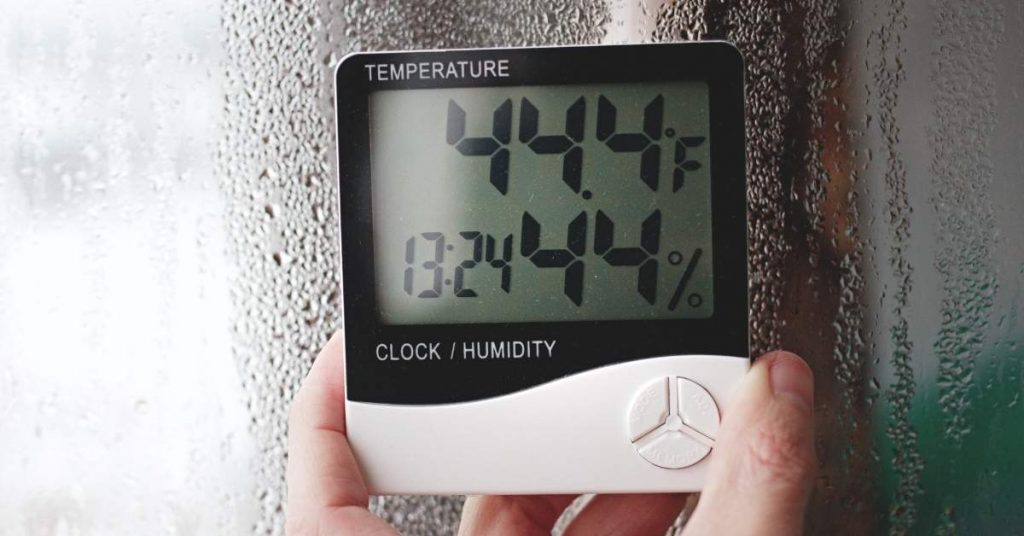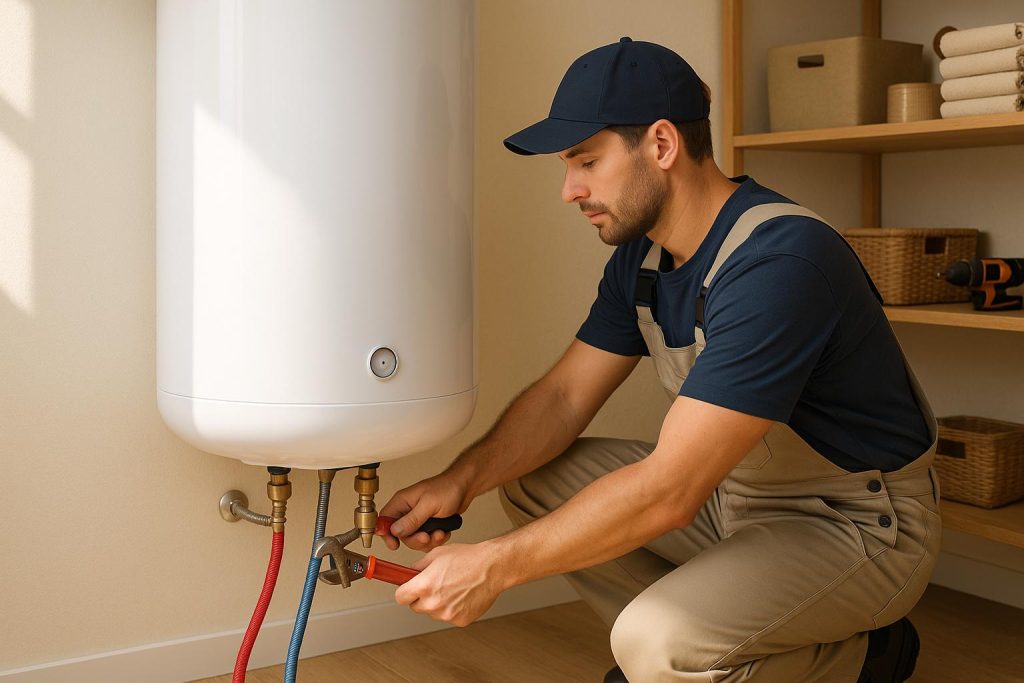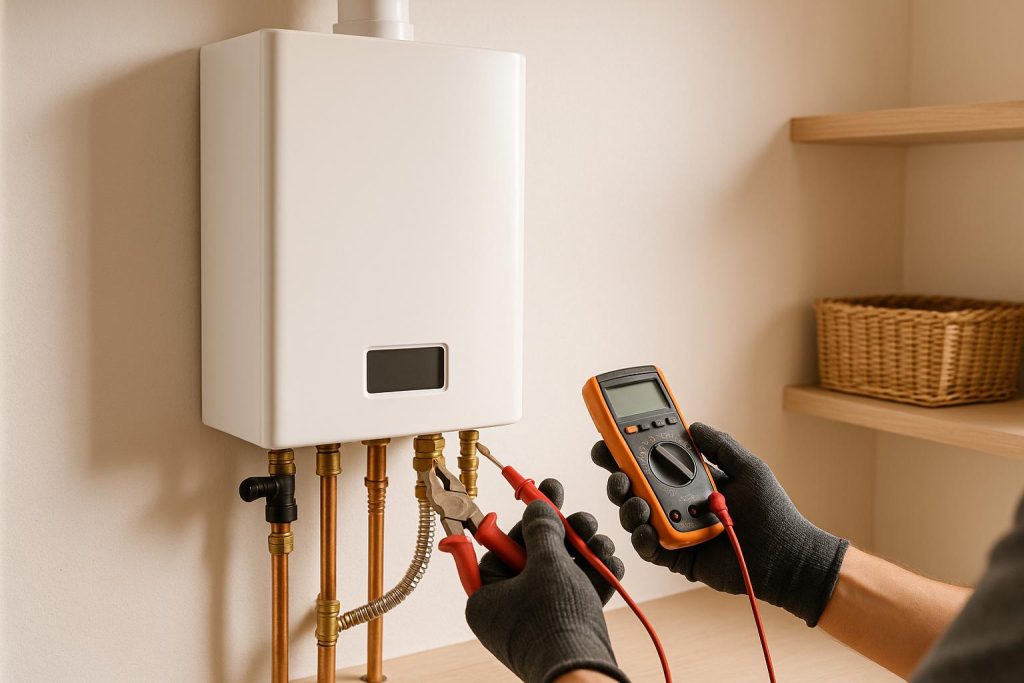
High humidity levels inside a house can lead to discomfort and potential issues like mold growth and structural damage. Here’s a summary of the common causes of high humidity in the house and their solutions:
Causes of High Humidity in the House
- Weather Conditions: High outdoor humidity, especially in warm and rainy climates, can lead to high indoor humidity levels if not properly managed.
- Poor Ventilation: Inadequate ventilation can trap moisture inside, causing humidity to rise. This is common in tightly sealed homes.
- Cooking: Cooking without proper ventilation can release moisture into the air.
- Showering and Bathing: Hot showers and baths produce steam, which can increase indoor humidity.
- Drying Clothes Indoors: Hanging wet clothes indoors without proper ventilation can introduce excess moisture into the air.
- Leaky Pipes or Appliances: Water leaks from pipes, appliances, or a roof can contribute to indoor humidity.
- Basement Moisture: Basements are prone to high humidity due to their underground location and limited ventilation.
Solutions for High Humidity in the House
- Use Exhaust Fans: Install exhaust fans in bathrooms and the kitchen to remove moisture at the source.
- Ventilation: Ensure proper cross-ventilation in your home by opening windows and using attic and crawl space vents.
- Dehumidifiers: Use portable or whole-house dehumidifiers to regulate humidity levels.
- Air Conditioning: Air conditioners naturally remove moisture from the air. Ensure your AC is functioning correctly.
- Seal Leaks: Repair any leaks in your home’s roof, walls, or plumbing to prevent moisture from entering.
- Use A/C and Fans Strategically: Use air conditioning and ceiling fans to circulate and cool the air, which can reduce humidity levels.
- Avoid Overwatering Plants: Indoor plants release moisture; avoid overwatering them.
- Store Firewood Outside: Firewood can release moisture as it dries; store it outside to prevent indoor humidity spikes.
- Fix Basement Issues: Waterproof your basement, improve drainage, and use a dehumidifier to reduce basement humidity.
- Weatherproof Windows and Doors: Properly seal windows and doors to prevent outdoor humidity from entering.
- Limit Activities That Produce Moisture: Be mindful of activities that release moisture, such as boiling water or extensive cooking without ventilation.
- Use Weatherstripping: Apply weatherstripping to doors and windows to prevent outdoor moisture from infiltrating your home.
Let us now look at the main causes of high humidity in the house in more details.
Why Your House is So Humid
Instead of just telling you why your indoor relative humidity is so high, I have also gone a step further and recommended ways you can reduce the humidity to acceptable levels.
The following are the causes of high humidity in the house:
1. Hot and Humid Weather

Relative humidity is not spread uniformly across the United States (and elsewhere in the world for that matter). It changes from location to location.
For instances, relative humidity in states like Hawaii and Florida is among the highest in the country while it is lowest in states like Arizona and New Mexico.
Proximity to the sea has a direct effect on humidity. When the water in the sea evaporates, the air in close proximity to the sea will have high humidity.
Note: Although relative humidity increase with increase in temperature, it is not always the case. Hot and dry locations have low humidity.
If you live in an area that is hot and humid, high relative humidity is something you will always deal with. The following are the top 10 states with the highest humidity in the United States:
- Alaska (77.1%)
- Florida (74.5%)
- Louisiana (74.0%)
- Mississippi (73.6%)
- Hawaii (73.3%)
- Iowa (72.4%)
- Michigan (72.1%)
- Indiana (72.0%)
- Vermont (71.7%)
- Maine (71.7%)
An air conditioner (especially central air and mini-splits systems) can be used to reduce humidity. Air conditioners will usually reduce humidity by removing 5 to 20 gallons of water in a day.
Apart from an air conditioner, you may need to install a dehumidifier if you live in a hot and humid area. While an air conditioner will lower, the humidity, the primary function of an AC is cooling indoor air.

A dehumidifier is specifically made to reduce humidity. A whole-house dehumidifier can be connected to the HVAC system or you can have a portable stand-alone dehumidifier to dehumidify a certain part of your house like the basement or attic.
Related: How to reduce humidity in the house.
2. Oversized Air Conditioner
Bigger is not always better. This rule also applies to air conditioners, and especially when dehumidification is concerned.
In air conditioners, dehumidification occurs when the moisture in the air comes into contact with the cold evaporator coil. As the air is being cooled, condensation occurs and the moisture drips in the drip pan below the coil and is then drained outside.
For proper dehumidification to happen, the indoor air needs to keep cycling through the evaporator coil for a long time. That doesn’t happen when you have a big air conditioner.
The big AC units only cycles for a short while and then it turns off. While that may be good for cooling, it is not enough to remove moisture from the air.
Below is how you are supposed to size your air conditioner relative to the size of your house:
- 4,000 BTU – 100-200 sq. ft. ,
- 6,000 BTU – 200-300 sq. ft.
- 8,000 BTU – 300-400 sq. ft.
- 10,000 BTU – 400-500 sq. ft.
- 12,000 BTU – 500-600 sq. ft.
- 14,000 BTU – 600-700 sq. ft.
- 16,000 BTU – 700-800 sq. ft.
- 18,000 BTU – 800-900 sq. ft.
- 20,000 BTU – 900-1,000 sq. ft.
- 24,000 BTU – 1,000-1,200 sq. ft.
If you have an oversized air conditioner that is not reducing the humidity in the house, there are 2 things you can do:
- Replace it with a properly sized air conditioner
- Complement it with a dehumidifier
3. Setting the AC Fan to ON
If you want to reduce your indoor humidity effectively using your air conditioner, you need to set the AC fan to AUTO and not ON.
What difference does it make though?
When your fan is set to ON, it cycles throughout, even when the air conditioner has turned off. That does not allow the condensation on the evaporator coil to drip off to the drip pan below it.
Instead, the air vaporizes the moisture and forces it back to the house. The indoor humidity will therefore not reduce.

On the other hand, having the fan on AUTO means that it will be turning off in between cooling cycles. That will give the condensate time to drip off into the drip pan and drain out of the house.
Setting your HVAC fan to AUTO will therefore have a major benefit in reducing the relative humidity in the house.
4. Badly Installed AC Indoor Unit
If you have a central air conditioner, you will have an indoor and outdoor unit. The indoor unit is located somewhere in the attic, basement, crawlspace, garage or utility closet.
As I have mentioned, the indoor unit (the evaporator coil) will have a condensate drip pan below it where the moisture drips into after condensation. A drain line will also be connected to the drip pan to remove the water to the outside.
The indoor unit needs to be installed on a level surface. That ensures that water does not pool inside the pan, but it is drained out as soon as it drips inside it.
However, if the unit (and the drip pan for that matter) is sloping to one side, there will always be water pooling inside. The water will keep evaporating contributing to the high relative humidity in the house.
Inspect if that is the problem you have and have it rectified as soon as possible.
5. Poorly Maintained Air Conditioner
For an air conditioner to cool your house and remove moisture, it needs to be properly maintained.
Do you have high humidity and it also feels like the air conditioner is not cooling properly? You may need to have an HVAC technician come over and repair it.
If you have a central air conditioner, there is a chance that 20% or more of your air is lost to leaks in the ductwork. Clogging or collapsed air ducts can also prevent warm and humid air from reaching the evaporator coil meaning that both cooling and dehumidification will be compromised.
Dirty evaporator coils and clogged air filters also restrict the air flow to the coil. Although the AC will be forced to work harder to cool the house (resulting in high energy bills), it will still fail to cool and remove moisture as it should.
Another thing that the technician will check is the refrigerant/Freon level. Low levels of the refrigerant will cause insufficient cooling which also means dehumidification will be insufficient.
Your evaporator coil can also free if the refrigerant pressure in the system is too low. A frozen AC will neither cool indoor air nor remove moisture from the air.
Scheduled maintenance of the air conditioner prevents all these problems from happening.
6. Rising Damp
There is always moisture in the ground. The amount of moisture in the ground depends on where you live, how well landscaped your outdoor areas are among other factors.
The moisture in the ground will always find a way of coming up and trying to penetrate inside the house.
If humidity in your house is high after raining, this could be the reason. Since the ground is now saturated with water, the moisture evaporates and enters your house through the basement, crawlspace or cracks in your house causing the relative humidity to shoot up.
Rising damp is a problem mostly experienced by people whose houses have a crawlspace. As you know, crawlspace are never finished, which means that the moisture comes up from the ground to the house without any restriction.
One way you can solve this problem is by using vapor barriers. Vapor barriers are basically plastic covers which are placed over the floor of the crawlspace or unfinished basement to prevent moisture in the ground from coming up in the house.

If you have a damp basement, you can consider installing a dehumidifier in there.
Proper landscaping outside the house ensures that water does not pool near the house or even flow back and seep inside but is instead drained as further away as possible.
7. Open Crawlspace Vents
The reason you could be having high humidity in the house is because the crawlspace vents are opened. That allows humid air from outside to enter the house from the crawlspace and you will then always struggle with high humidity.
If you have a crawlspace that has vents, make sure you go down there, close and seal them.
Open crawlspace vents is like having open windows during the summer. Even though they may help with ventilation, they will keep bringing in humid air which will cause your air conditioner to overwork.
8. Cooking and Showering
As I mentioned, hot air holds more moisture than cold air. And that is exactly what happens when you are cooking and showering.
Cooking generates heat which causes the moisture in the food and elsewhere in the kitchen to saturate the indoor. You can literally see condensation on the kitchen wall tiles when boiling water or cooking any type of food.
Showering on the other hand can take anywhere from 5 to 15 minutes. Given that shower heads have a flow rate of 2.5 gallons per minute, this means that you will use between 12.5 and 37.5 gallons of hot water.
Although most of the water will drain out, the air inside the shower will be saturated with moisture and you can even see condensation on the bathroom window or toilet tank.
One thing you can do to reduce relative humidity when cooking and showering is running the exhaust fans. Exhaust fans pull the humid air from the bathroom and kitchen and dump it outside.

I would recommend turning on the exhaust fan before starting to cook or shower then letting it run a little while after you are done cooking or showering.
9. Poor Ventilation
Ventilation is a just as important as cooling and heating. Ventilation is simply removing stale and stagnant indoor air and replacing it with fresh outdoor air.
If you have humid air somewhere in the basement, attic or bathroom, you need a system where the air can be removed and replaced with fresh air. That is a great way of preventing mold from growing indoors.
In summer, opening doors and windows is not a good way of ventilating the house since that will reduce the effectiveness of the air conditioner. You can open the bathroom or kitchen window for some time but you need proper ventilation for the whole house that does not lower the effectiveness if the HVAC system.
Fans are a good way of ventilating the house. Ceiling fans for instance will pull air from the bottom to the top and just keep it moving instead of being stagnant. This is actually good if you have furniture and rags which are more likely to absorb and retain moisture.
Standing fans can also be used in areas where there are no ceiling fans. Highly insulated areas like attics may however need a dehumidifier.
Exhaust fans are very helpful in kitchens and bathrooms. Since those parts of the house will always have moisture, the exhaust fan vents the humid air to the outside thereby lowering indoor humidity.
10. Rugs and Carpets
Rugs and carpets will naturally absorb and retain moisture especially when laid on concrete. The moisture encourages the growth of mold and within no time you will have a musty smell in your house and respiratory infections.
If you have to use a rag on concrete, make sure that the concrete is first covered using a vapor barrier and then a subfloor installed on top of it. Alternatively, you can use alternative flooring solutions like wood or tiles.
11. Drying Laundry Inside
When you dry laundry inside the house, all the moisture will end being suspended in the indoor air increasing the relative humidity in the house.
Drying laundry outside is a great way of preventing that from happening. You can buy a retractable hanging line which you put up outside and pull it out with relative, ease, and without it being an eyesore.
You will however have to first find out if drying laundry is acceptable in your area. There are many neighborhoods which prohibit it.
If drying your laundry outside is not an option, you can dry it inside but make sure you have a dehumidifier.
12. Water Leaks

Do you have a leaking water heater, toilet, sink drain or just a water pipe dripping water into the floor or ceiling? That can explain why you have high humidity in the house.
The water from the leaking pipe or fixture will eventually evaporate and increase the indoor relative humidity. Sometimes the problem could be causes by condensation on water pipes.
Fixing water leaks and insulating pipes to prevent condensation is a great way of controlling the humidity inside your house.
Other Ways of Reducing High Humidity in the House
- Regularly clean and inspect gutters to make sure that they are draining water away.
- Fix cracks in the basement.
- Take shorter showers and cold ones if possible.
- Have a professional treat your foundation to prevent water from seeping into the house.
- Have walls painted instead of using wallpapers which can retain moisture and cause mold to grow.
- Fix sweating toilets.
- Line windows with plastic film or storm-coating to prevent condensation
- Weather-stripping and caulking around door and window seals to prevent humid outdoor air from entering the house.
And basically those are the reasons why the relative humidity in your house is high. I hope that this post helped you understand what you can do about high humidity.





